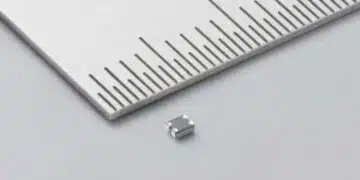This Würth Elektronik video tutorial focuses on the possibilities of intelligent PCB-based thermal management and which PCB design goals can be achieved by it.
Advanced Thermal Management Techniques in PCB Design
This presentation explores advanced thermal management techniques in printed circuit board (PCB) design, focusing on methods to mitigate heat-related issues and extend the lifespan of electronic components. It discusses system requirements, solution approaches, thermal simulation, and cost comparisons between ceramic and printed circuit boards.
Introduction:
Effective thermal management is crucial in PCB design to prevent overheating and ensure the longevity of electronic components. This article examines various strategies, including wire spreading, plane utilization, and heating glue heads, to lower component temperatures and enhance product reliability.
System Requirements and Solution Approach:
The system imposes specific requirements on cooling and heating elements. A temperature of 50°C is targeted for the aluminum cooling element surface to ensure optimal system performance. A fitwirebone bonding process is recommended due to the large aluminum surface, presenting logistical challenges for PCB manufacturers. Optimal firmware management involves placing microbias directly in the solder, close to the cooling element, to meet high-temperature requirements. The target pressure between the PCB and cooling element is approximately 1.6 Newtons per square millimeter. Lifetime simulations of circuit boards under climate and temperature influences confirm the feasibility of these solutions, provided the aluminum surface quality remains suitable for the screwing process.
Thermal Simulation and Verification:
Thermal simulations reveal that the system effectively manages heat, with critical hotspots identified near powered resistors. The results align with complex simulations, confirming the efficacy of firmware management in maintaining system performance.
System Cost Comparison: Ceramic vs. Printed Circuit Board:
While ceramic systems offer flexibility and effective solutions, they are generally more expensive. Cost drivers include PCB size, material costs, build-ups, and mechanical processes such as mechanical drilling and contour matching. Printed circuit boards provide a cost-effective alternative, especially when these factors are optimized.
Concluding Remarks and Summary:
The project underscores the necessity of specialized equipment and a skilled team for effective thermal management. Miniaturization in HDI technology, combined with firmware management, offers a viable solution for competent PCB manufacturers. The proposed project and system solution are expected to play an essential role in future collaborations between customers and manufacturers, particularly in product management. The authors look forward to discussing further projects and ideas.































